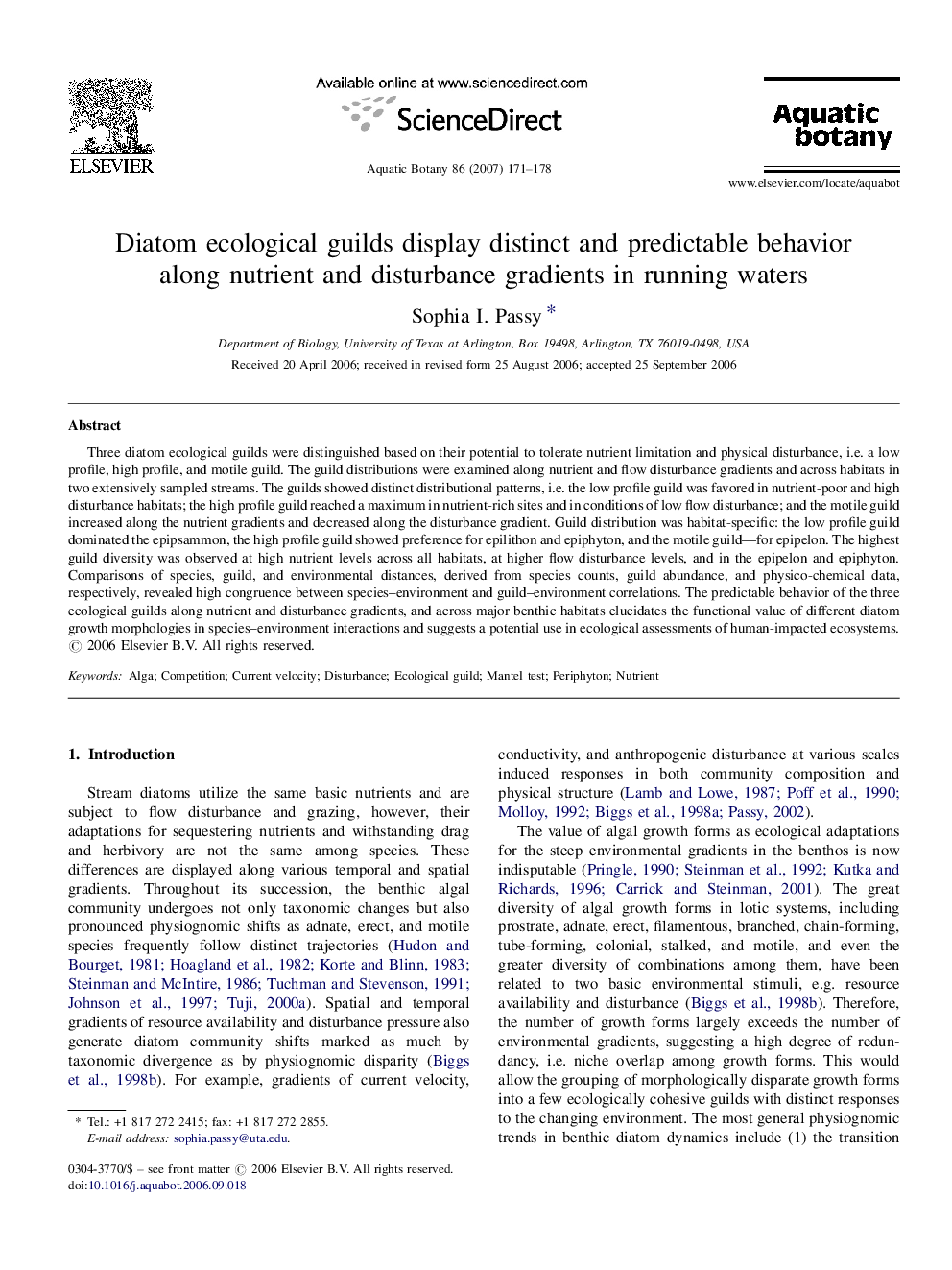| Article ID | Journal | Published Year | Pages | File Type |
|---|---|---|---|---|
| 4528655 | Aquatic Botany | 2007 | 8 Pages |
Three diatom ecological guilds were distinguished based on their potential to tolerate nutrient limitation and physical disturbance, i.e. a low profile, high profile, and motile guild. The guild distributions were examined along nutrient and flow disturbance gradients and across habitats in two extensively sampled streams. The guilds showed distinct distributional patterns, i.e. the low profile guild was favored in nutrient-poor and high disturbance habitats; the high profile guild reached a maximum in nutrient-rich sites and in conditions of low flow disturbance; and the motile guild increased along the nutrient gradients and decreased along the disturbance gradient. Guild distribution was habitat-specific: the low profile guild dominated the epipsammon, the high profile guild showed preference for epilithon and epiphyton, and the motile guild—for epipelon. The highest guild diversity was observed at high nutrient levels across all habitats, at higher flow disturbance levels, and in the epipelon and epiphyton. Comparisons of species, guild, and environmental distances, derived from species counts, guild abundance, and physico-chemical data, respectively, revealed high congruence between species–environment and guild–environment correlations. The predictable behavior of the three ecological guilds along nutrient and disturbance gradients, and across major benthic habitats elucidates the functional value of different diatom growth morphologies in species–environment interactions and suggests a potential use in ecological assessments of human-impacted ecosystems.
